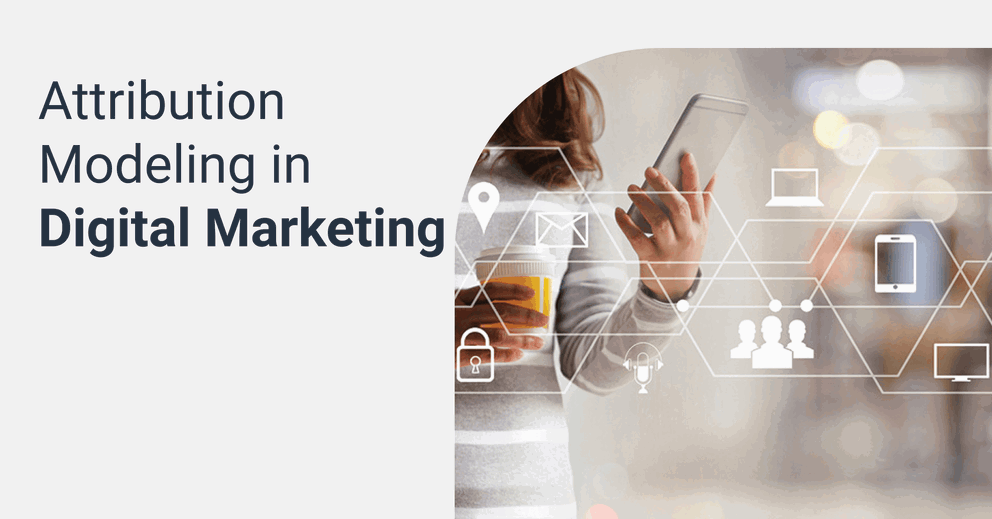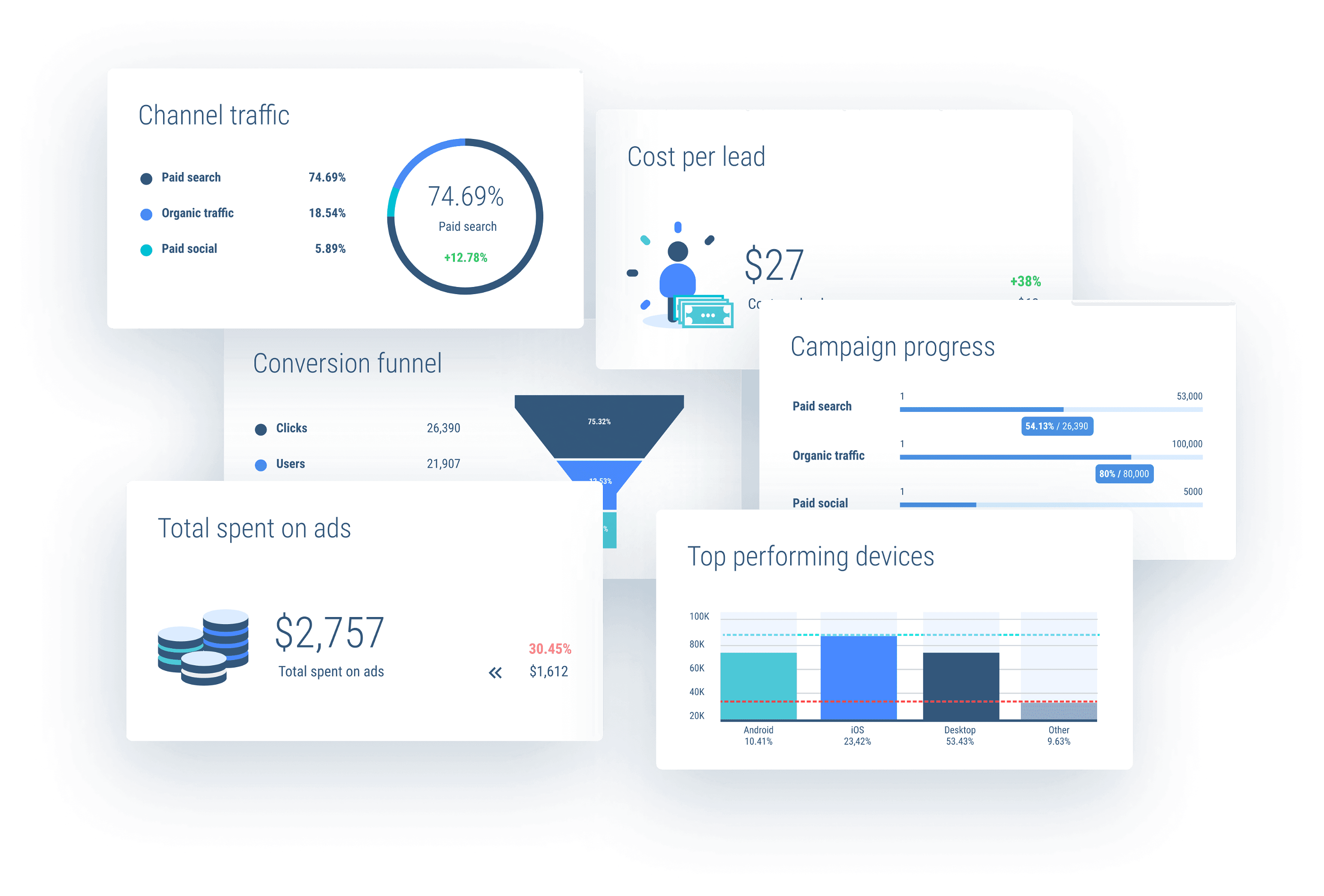Your Easy Guide to Digital Marketing Attribution
Wouldn't it be something if we could directly track where conversions come from? A lot of folks think we can, but the reality is a little bit more complicated.

Oct 14 2020●5 min read

What is marketing attribution?
Have you ever tried to pinpoint which marketing channels or tactics were leading to conversions?
Well, you're not alone. Lots of people try to do this regularly. And marketing attribution is all about that action. Marketing attribution is the science of analyzing and identifying the set of actions that lead to conversions.
If you're wondering why this is even a thing, well, it turns out that customer journeys can be pretty messy.
Why is attribution important?
Users on the web today have this crazy tendency to hop around before settling down and converting. In other words, they'll hear about a product or service once and circle back around later. This continues typically until they eventually convert - or never convert at all.
Which, in turn, makes it hard to figure out which channels lead to conversions after an extended customer journey.
But, the question is, why is figuring this out of any importance?
The answer is pretty simple. Knowing which touchpoints lead to conversions after a long journey can help marketers.
This lets them hone in on their future campaigns and strategy. That way, they focus on what matters throughout the customer journey. Once they identify which touchpoints mean the most in the customer journey and which ones don't mean much, they can start getting things done.
As sensitive as resources normally are, effectively done marketing attribution can help marketers direct resources more efficiently and build more integrated and data-driven marketing touchpoints.
In layman terms, this means marketers can focus their efforts and marketing campaigns on more effective methods of reach within the customer journey to drive more conversions.
You probably think this is super complicated and involves a lot of data to peruse through.
Data and analytics do play a role in effective marketing attribution.
The role of data and analytics in marketing attribution
To effectively do marketing attribution, marketers need in-depth and understandable insights on the individual customer level. This cannot be easy to get.
And making sense of unique customer insights is crucial when inferring on their reason for conversion.
If you're thinking about all of the clustered data on Google Analytics right now and how you'd go about explaining these insights to your clients, we feel your pain.
Not to be mistaken for an ad, but this is where Whatagraph could jump in as a great way to visualize complicated data and put it into actionable form. Which, in turn, could be used to help optimize marketing campaigns and all of that other good stuff.
 |
Other than importance, what are the actual benefits of marketing attribution?
The benefits of marketing attribution?
It's no secret that with benefits often comes costs, so let's start with the latter.
Getting the right system for analyzing and attributing can be grueling and taxing in terms of both time and money.
But once the foundation is set, you'll be ready to attribute some marketing.
Or... something like that.
Marketing attribution can, among other things, help you:
- Optimize your ROI;
- Improve and personalize ad messages;
- Optimize your marketing spend;
- Improve product development.
While the pros seem to outweigh the cons, there do tend to be challenges and biases related to the attribution process.
Common challenges with marketing attribution
Everything in life comes with its pitfalls and challenges, and marketing attribution is no exception.
There are quite a few challenges one can face, but for the sake of time and your sanity, we'll go over three of the most common: correlation bias, in-market bias, and digital signal bias.
Many of us have heard the age-old saying that goes, "correlation is not causation".
Well, this is one of the issues that arise from marketing attribution. Marketeers lend themselves to this bias when attributing success to the wrong factors, based on appearance. This is a prime example of correlation bias.
Whereas, in-market bias happens when customers click on ads, and the ads get the attribution when, in reality, the customer would have purchased whether they had seen the ad or not.
And digital signal bias occurs when models aren't adjusted for the relationship between online activity and offline sales.
These are just a few examples of challenges that can result in misattribution, shadowing the real reasons behind the success of campaigns. A great way to avoid and mitigate some of these challenges is by using models made to measure for attribution more accurately.
Models for measuring marketing attribution
Luckily, there are loads of existing models for measuring marketing attribution. So, no need to reinvent the wheel.
Generally, these models provide insights at the user-level through statistical analysis.
This contrasts with more traditional models of aggregating big data without delving into individual users. As you may have guessed, a typical attribution model will be aimed towards the digital realm.
However, attribution models vary in the methods of analysis and measurements, and we'll briefly cover some of them.
Last Interaction Attribution
The last interaction model, otherwise known as the "last touch" or "last click", unsurprisingly, gives credit to the last touchpoint before converting. Google Analytics uses this model by default on their platform because it's really simple. Both in implementation and evaluation.
It's also widely used because of the mixed-use of devices and platforms, making customer journeys harder than ever to track.
Sadly, this model pays no heed to any other interactions before the conversion. It could lead to misconstrued ideas of what positively contributes to conversions.
However, if you don't have many touchpoints, this method could work great.
First Interaction Attribution
Next is the first interaction attribution model. As the name suggests, this is the direct opposite of the last interaction attribution model.
Shocking, right?
Often called the "first click" model, the conversion credit under this mode is attributed to the first interaction between the customer and your business.
This seems glamorous at first glance, but it does not account for any retargeting ads or other marketing channels in the customer journey.
If you have a history of quick conversion rates, this may be a good model for measurement.
Linear Attribution
This model takes into account all the interactions the customer had with your marketing before converting. The credit is then linearly distributed.
Linear attribution assigns equal value to touchpoints and balances out the whole strategy. But this doesn't emphasize what works and what doesn't; it simply categorizes everything as important.
It's a lot easier to explain to your clients, but it doesn't bring you insight into what is working.
Which model should you use?
With all of these different attribution models available, which one should you use?
It depends. This probably isn't the answer you wanted to read, but one formula can't solve every equation.
Currently, there exists a great deal of models to utilize. And if need be, you can always customize a model that would be the most fitting to your needs.
So, the right attribution model for you does depend on what sort of sales cycle is at play and whether it's online or offline marketing campaigns. You will likely need to use more than one model to adjust for the variation in your marketing schemes.
This means that to make the most out of these insights, you'll likely need to correlate the data from each platform, both online and offline, to exploit the insights for your benefit fully.
Picking the right models for attribution is paramount when gaining more in-depth insights and understanding what specifically leads to conversions.
So yes, contrary to what Linkin Park sang, in the end, it does matter... which attribution modeling you apply.

WRITTEN BY
Roberta AukstikalnyteRoberta is a content writer and editor who strives to share industry updates with her readers. Her professional background includes Public Relations and Customer Success.